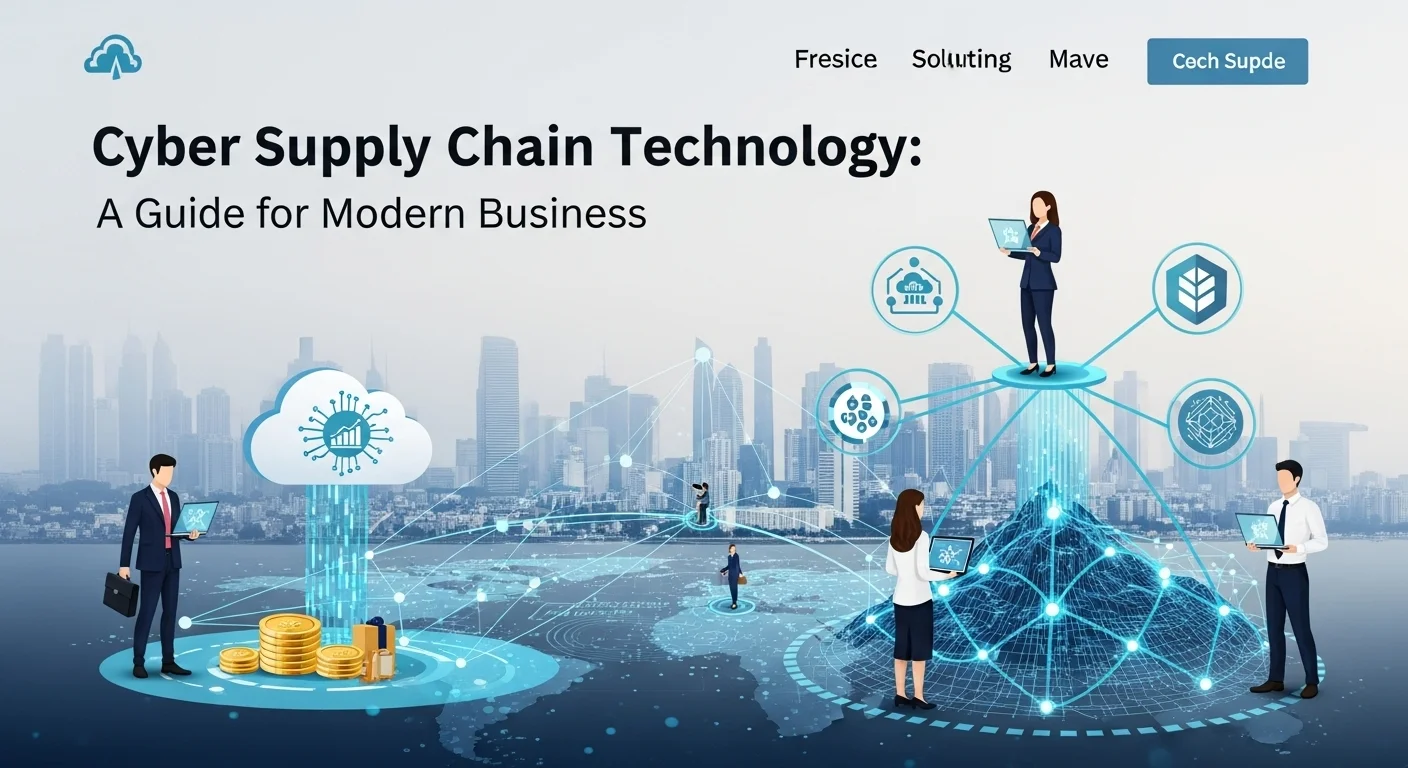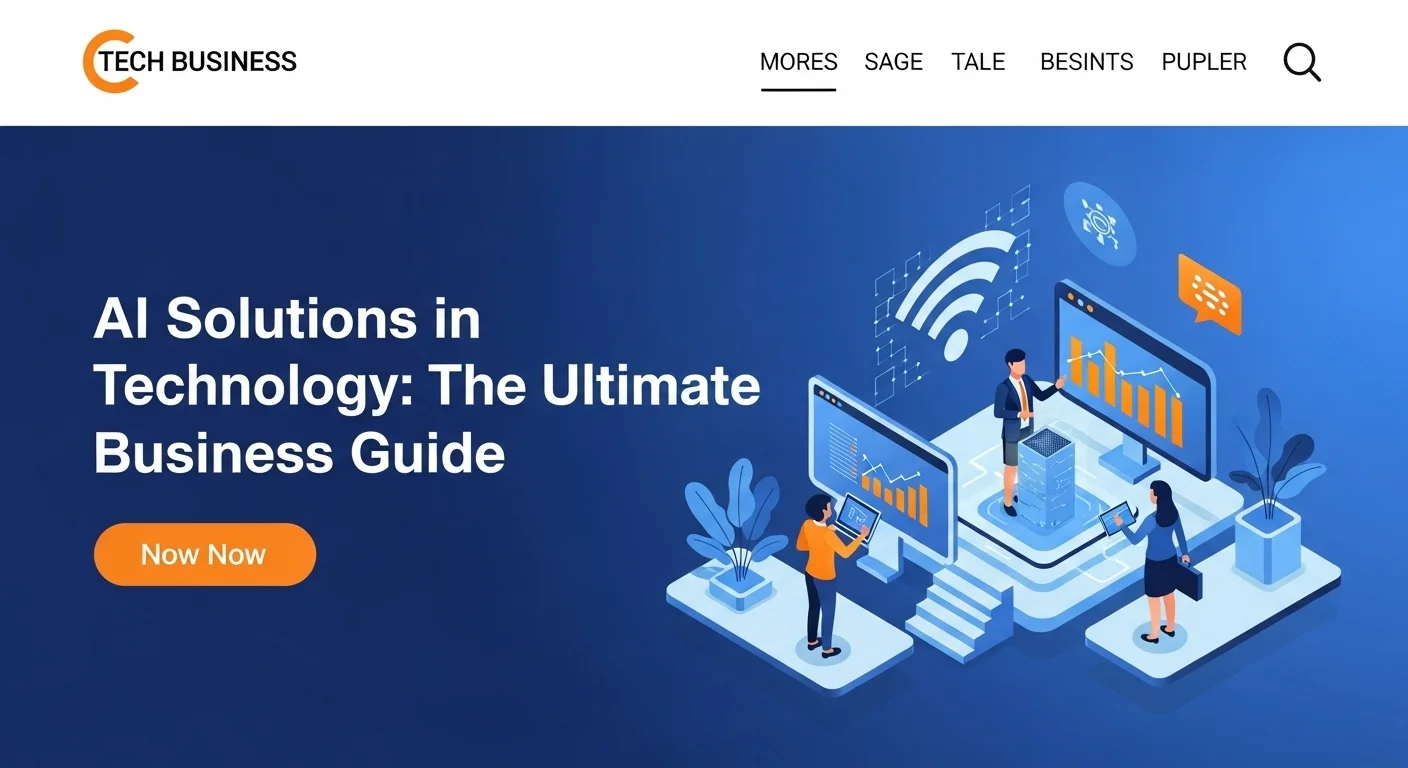Cyber Supply Chain Technology: A Guide for Modern Business

Executive Summary
In today's interconnected digital ecosystem, the integrity of your technology is only as strong as the weakest link in its supply chain. This article delves into the critical domain of Cyber Supply, a cornerstone of modern technology and business strategy. We will explore the comprehensive field of cyber security supply chain risk management (C-SCRM), explaining its profound importance for businesses that rely on third-party hardware, software, and services. From understanding the foundational concepts and identifying potential vulnerabilities to implementing robust security frameworks, this guide serves as an essential resource for tech enthusiasts and business leaders alike. We will cover the renowned nist cyber supply chain risk management framework, offering actionable insights and strategies. By understanding and applying the principles of cyber security in the supply chain, organizations can protect their operations, data, and reputation from sophisticated threats, ensuring resilience and fostering trust in a complex technological landscape. This is your definitive guide to mastering cyber supply chain security.
Table of Contents
What is Cyber Supply and why is it important in Technology?
In an era where technology is the backbone of virtually every business, the term 'Cyber Supply' has emerged as a critical area of focus. But what does it truly mean? At its core, Cyber Supply refers to the entire lifecycle of technology products and services, from design and development, through manufacturing and distribution, to deployment and disposal. The security of this supply chain is paramount, giving rise to the discipline known as cyber security supply chain risk management (C-SCRM). This practice is dedicated to identifying, assessing, and mitigating the risks associated with the global and distributed nature of technology supply chains. These risks are not trivial; they can include counterfeit hardware, malicious code injected into software, intellectual property theft, and vulnerabilities introduced through third-party components. The complexity of modern technology, which often involves hundreds of suppliers from around the world for a single product, creates a vast attack surface that adversaries are keen to exploit.
The importance of robust cyber supply chain security cannot be overstated. High-profile incidents have demonstrated the devastating potential of supply chain attacks. The SolarWinds attack, for instance, saw malicious code inserted into a legitimate software update, compromising thousands of organizations worldwide, including government agencies and major corporations. Similarly, the NotPetya malware was distributed through a compromised update for Ukrainian accounting software, causing billions of dollars in damages globally. These events serve as stark reminders that an organization's security posture is inextricably linked to the security practices of its suppliers. Effective supply chain risk management cyber security is therefore not just an IT issue, but a fundamental business imperative. It is about ensuring business continuity, protecting sensitive data, maintaining customer trust, and complying with an increasing number of regulations that mandate supply chain integrity.
The Expanding Digital Ecosystem and Its Inherent Risks
The digital transformation has led businesses to rely heavily on a complex web of external suppliers, including cloud service providers, software-as-a-service (SaaS) vendors, managed service providers (MSPs), and hardware manufacturers. While this ecosystem fosters innovation and efficiency, it also introduces significant risks. Each vendor, and each vendor's vendor, represents a potential entry point for a cyberattack. A vulnerability in a single open-source library, a component in a server's motherboard, or a third-party API can have a cascading effect, creating widespread security breaches. The challenge of ensuring cyber security in supply chain logistics is immense. Organizations often lack visibility into the security practices of their downstream suppliers, making it difficult to assess the true level of risk. The threats are diverse and sophisticated, ranging from unintentional vulnerabilities caused by poor coding practices to deliberate tampering by malicious actors, including nation-states seeking to conduct espionage or sabotage.
To address these challenges systematically, many organizations are turning to established frameworks. The most prominent of these is the nist cyber supply chain risk management framework, specifically outlined in NIST Special Publication 800-161. This framework provides a comprehensive set of guidelines for organizations to build a structured C-SCRM program. It helps organizations to frame, assess, respond to, and monitor supply chain risks throughout the technology product and service lifecycle. Adopting such a framework moves an organization from a reactive to a proactive security posture, enabling it to make risk-informed decisions about which suppliers to trust and what security controls to implement. This structured approach is essential for managing the complexity and scale of modern technology dependencies.
Business Applications and Tangible Benefits
The application of strong cyber security supply chain risk management principles yields significant business benefits beyond just preventing attacks. Firstly, it enhances operational resilience. By understanding and mitigating supply chain risks, businesses can reduce the likelihood of disruptions to their critical operations, ensuring they can continue to deliver products and services to their customers even in the face of a security incident. Secondly, it protects brand reputation and customer trust. A single supply chain compromise can lead to a massive data breach, eroding customer confidence and causing long-term damage to a company's brand. Proactively managing these risks demonstrates a commitment to security that can be a powerful market differentiator.
Thirdly, it facilitates regulatory compliance. Governments and industry bodies worldwide are implementing stricter regulations that hold organizations accountable for the security of their supply chains. Regulations like the EU's NIS2 Directive and the US Cybersecurity & Infrastructure Security Agency (CISA) guidelines place a strong emphasis on C-SCRM. Adhering to a framework like the nist cyber supply chain risk management program can help organizations meet these requirements and avoid hefty fines. Finally, effective cyber supply chain security can drive competitive advantage. By building a secure and resilient supply chain, businesses can offer more reliable and trustworthy products, attracting security-conscious customers and partners. It transforms cybersecurity from a cost center into a business enabler, fostering innovation on a secure foundation. The journey towards mature supply chain risk management cyber security is a continuous one, requiring commitment, resources, and a holistic view of the interconnected technological landscape. The initial investment in establishing these practices pays dividends in long-term stability, security, and success.

Complete guide to Cyber Supply in Technology and Business Solutions
Navigating the intricate world of Cyber Supply requires a deep understanding of both technical methodologies and strategic business practices. A comprehensive approach to cyber security supply chain risk management (C-SCRM) is not a one-size-fits-all solution but a tailored program that aligns with an organization's specific risk appetite, resources, and business objectives. This guide provides a detailed look at the methods, techniques, and resources available to build a resilient and secure technology supply chain. At the heart of any robust C-SCRM program is a structured framework that provides a common language and a systematic process for managing risks. The most widely adopted and respected of these is the nist cyber supply chain risk management framework.
Deep Dive into the NIST C-SCRM Framework (NIST SP 800-161)
The National Institute of Standards and Technology (NIST) provides the gold standard for C-SCRM with its Special Publication 800-161, 'Cybersecurity Supply Chain Risk Management Practices for Systems and Organizations.' This framework is not just a checklist but a comprehensive guide to integrating C-SCRM into an organization's overall risk management activities. It is structured around four key functions:
- Frame: This initial step involves establishing the context for C-SCRM. It's about defining the boundaries of the program, identifying key suppliers and critical technology components, and determining the organization's risk tolerance. Framing the risk involves understanding the business impact of a potential supply chain compromise and setting the strategic goals for the C-SCRM program. This stage is crucial for securing executive buy-in and allocating the necessary resources.
- Assess: Once the context is framed, the next step is to assess the supply chain for specific risks. This involves conducting due diligence on suppliers, analyzing the technology products and services being acquired, and identifying potential vulnerabilities. Assessment is an ongoing activity that includes evaluating everything from a supplier's security policies and development practices to the geopolitical risks associated with their location. This function is critical for gaining visibility into the opaque layers of the supply chain.
- Respond: Based on the assessment, organizations must develop and implement a response plan. This involves choosing a course of action for each identified risk, such as mitigating the risk by implementing security controls, transferring the risk through contractual agreements or insurance, avoiding the risk by selecting a different supplier, or accepting the risk if it falls within the organization's tolerance level. The response plan should be documented and should include specific, actionable steps.
- Monitor: Cyber supply chain security is a dynamic field. Threats, vulnerabilities, and suppliers are constantly changing. The Monitor function emphasizes the need for continuous oversight of the supply chain. This includes monitoring suppliers for changes in their security posture, staying informed about new threats and vulnerabilities, and regularly reviewing the effectiveness of the implemented security controls. Continuous monitoring ensures that the C-SCRM program remains relevant and effective over time.
Technical Methods for Enhancing Cyber Security in Supply Chain
Beyond the strategic framework, several technical methods are essential for implementing effective supply chain risk management cyber security. These tools and practices provide tangible ways to verify the integrity and security of technology components.
- Software Bill of Materials (SBOM): An SBOM is a formal, machine-readable inventory of the software components and dependencies that make up an application. It's like a list of ingredients for software. By demanding SBOMs from their vendors, organizations can gain transparency into the software they are using, identify components with known vulnerabilities, and manage license compliance. The SBOM is a foundational element for modern software security and a key tool for managing cyber security in supply chain.
- Hardware Bill of Materials (HBOM): Similar to an SBOM, an HBOM provides a detailed list of the components used in a piece of hardware. This helps in identifying counterfeit components, tracking the provenance of parts, and assessing the hardware for security risks.
- Code Signing and Integrity Verification: Cryptographic code signing provides assurance that software has not been altered since it was signed by the developer. Organizations should verify the digital signatures of all software they install to ensure its authenticity and integrity. This is a simple yet powerful control against tampering.
- Secure Development Lifecycle (SDL) Mandates: Organizations should require their software suppliers to adhere to a Secure Development Lifecycle. An SDL integrates security activities into every phase of the software development process, from requirements and design to coding, testing, and deployment. This helps to build security in from the start, rather than trying to bolt it on at the end.
- Vulnerability Scanning and Penetration Testing: It is crucial to actively test third-party products for weaknesses. This can involve using automated scanners to look for known vulnerabilities or conducting in-depth penetration tests to simulate a real-world attack. These activities provide a realistic assessment of a product's security posture.
Business Techniques and Strategic Resources
The technical controls must be supported by strong business processes. Effective cyber security supply chain risk management is as much about contracts and relationships as it is about code and components. Key business techniques include:
- Thorough Vendor Due Diligence: Before entering into a relationship with a supplier, conduct a comprehensive risk assessment. This should cover their financial stability, reputation, and, most importantly, their cybersecurity practices. Questionnaires, audits, and third-party security ratings can all be part of this process.
- Strong Contractual Language: Contracts with suppliers should include specific cybersecurity requirements. This can include the right to audit the supplier's security controls, requirements for timely vulnerability disclosure, mandates for providing SBOMs, and clear liability clauses in the event of a breach originating from the supplier.
- Supplier Tiering: Not all suppliers pose the same level of risk. Organizations should tier their suppliers based on their criticality to the business and the sensitivity of the data they handle. High-risk suppliers should be subject to more stringent security requirements and more frequent monitoring.
- Incident Response Collaboration: Develop a joint incident response plan with critical suppliers. This ensures that in the event of a security incident, both parties can coordinate their efforts effectively to contain the damage and recover quickly.
By combining a strategic framework like the nist cyber supply chain risk management guide with specific technical and business controls, organizations can build a formidable defense against the growing threat of supply chain attacks. This holistic approach to cyber supply chain security is essential for thriving in the modern digital economy.

Tips and strategies for Cyber Supply to improve your Technology experience
Implementing a robust cyber security supply chain risk management (C-SCRM) program can seem like a daunting task, especially for small and medium-sized businesses (SMBs) with limited resources. However, by adopting a strategic, risk-based approach, organizations of all sizes can significantly improve their resilience against supply chain threats. This section offers practical tips, actionable strategies, and insights into best practices to enhance your organization's cyber supply chain security. The goal is to move from theory to practice, leveraging tools and techniques to create a tangible improvement in your technology experience and overall security posture.
Best Practices for a Resilient Cyber Supply Chain
Regardless of an organization's size or industry, certain best practices form the foundation of effective C-SCRM. These principles, often aligned with frameworks like the nist cyber supply chain risk management guide, provide a roadmap for success.
- Establish Clear Governance and Leadership: C-SCRM cannot be solely an IT initiative. It requires buy-in and oversight from senior leadership. Create a cross-functional team with representatives from IT, cybersecurity, procurement, legal, and business operations to govern the C-SCRM program. This ensures that risks are evaluated from multiple perspectives and that decisions align with overall business strategy.
- Know Your Supply Chain: You cannot protect what you do not know. The first step is to identify and map out your critical suppliers and the technology they provide. This includes not only your direct (Tier 1) suppliers but also, where possible, their key suppliers (Tier 2). Prioritize this list based on the criticality of the supplier to your business operations.
- Integrate C-SCRM into Procurement: Security should be a key criterion in every procurement decision. Develop a standardized set of security questions and requirements to include in all Requests for Proposals (RFPs). Make security a weighted factor in the vendor selection process, not just an afterthought. This is a core tenet of effective supply chain risk management cyber security.
- Leverage Contractual Power: Use contracts to enforce your security standards. Work with your legal team to develop standard contract clauses that require suppliers to adhere to specific security controls, provide transparency (e.g., through SBOMs), notify you of breaches in a timely manner, and grant you the right to conduct security assessments.
- Embrace the Principle of 'Trust but Verify': Do not blindly trust your suppliers' security claims. Implement a verification program that may include reviewing third-party audit reports (like SOC 2), conducting your own vulnerability scans on their products, or performing periodic on-site assessments for the most critical suppliers.
- Develop a Coordinated Incident Response Plan: Your incident response plan must account for supply chain scenarios. Define roles, responsibilities, and communication channels with your key suppliers in the event of a breach. Regularly test these plans through tabletop exercises to ensure everyone knows what to do when an incident occurs.
Tools and Technologies for the Modern Business
A variety of tools can help automate and enhance your C-SCRM efforts. While enterprise-grade solutions can be expensive, many effective tools are accessible to businesses of all sizes.
- Third-Party Risk Management (TPRM) Platforms: These platforms help automate the process of sending out security questionnaires, collecting and analyzing vendor responses, and continuously monitoring suppliers for security issues. They provide a centralized dashboard for managing vendor risk.
- Software Composition Analysis (SCA) Tools: These tools are essential for implementing an SBOM strategy. They can automatically scan software to identify all open-source components and check them against databases of known vulnerabilities.
- Attack Surface Management (ASM) Tools: ASM solutions continuously scan the internet to discover an organization's external-facing digital assets, including those hosted by third-party suppliers. This helps identify potential security gaps and unmanaged assets that could be exploited.
- Threat Intelligence Feeds: Subscribing to threat intelligence services can provide early warnings about vulnerabilities in the software you use or compromises affecting your suppliers. This enables proactive risk mitigation.
The Role of AI and a Culture of Security
Artificial Intelligence (AI) is increasingly being used to bolster cyber security in supply chain. AI-powered tools can analyze vast amounts of data to detect anomalies that might indicate a compromise, predict which suppliers are at higher risk, and automate the analysis of security data, freeing up human experts to focus on strategic tasks. Furthermore, technology alone is not enough. Fostering a strong culture of security is paramount. This involves training all employees, especially those in procurement and vendor management, to be aware of supply chain risks. When everyone in the organization understands their role in maintaining cyber supply chain security, the entire program becomes more effective. For those seeking to deepen their understanding, an invaluable resource is the official CISA website on ICT Supply Chain Risk Management, which provides guides, tools, and updates on federal initiatives. This commitment to continuous learning and adaptation is the hallmark of a mature security program.
In conclusion, improving your technology experience through better Cyber Supply management is an achievable goal. It requires a strategic blend of governance, process, and technology. By following best practices, leveraging the right tools, and building a security-conscious culture, your organization can effectively manage the complexities of the modern technology ecosystem. The principles of cyber security supply chain risk management, guided by frameworks from institutions like NIST, provide a clear path to building a more secure and resilient future for your business.
Expert Reviews & Testimonials
Sarah Johnson, Business Owner ⭐⭐⭐
The information about Cyber Supply is correct but I think they could add more practical examples for business owners like us.
Mike Chen, IT Consultant ⭐⭐⭐⭐
Useful article about Cyber Supply. It helped me better understand the topic, although some concepts could be explained more simply.
Emma Davis, Tech Expert ⭐⭐⭐⭐⭐
Excellent article! Very comprehensive on Cyber Supply. It helped me a lot for my specialization and I understood everything perfectly.



